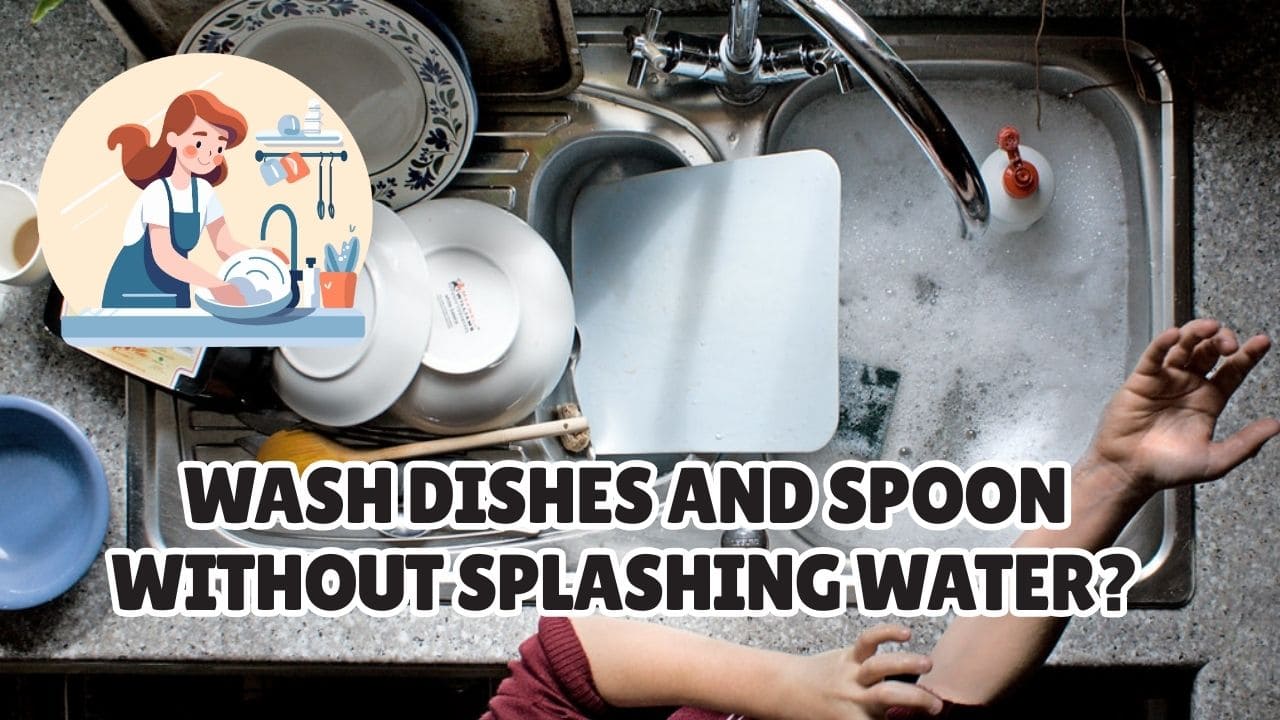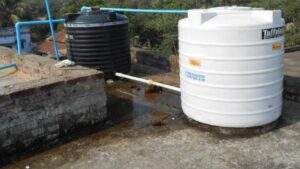When washing dishes or utensils such as spoons, you have to expect that there would be splashes which can be a nuisance in the kitchen. But there is no need to get frustrated, learn how to wash dishes and spoon without splashing water; as there are a few techniques and tools that aim at minimizing splashes and making the task of washing the dishes simpler. This handbook will give you step by step instructions and tell you how to wash dishes and spoons in such a way that there is no spillage of water.
Understanding the Basics of Dishwashing
Before getting into the deep end of various techniques, here is a short explanation of how the dishwashing process works. It involves scraping off food particles, applying soap and water, rinsing, and placing it back to dry. All those steps mentioned can be refined and managed in order to prevent unwanted spillages.
Why You Should Care About the Technique of Dishwashing
There are many instances during the wash where you toss around the dishes and utensils which can increase the level of water splashing. Such movements should be avoided to an extent through the use of soap, where most of the motion should be in the wrist.
How to wash dishes and spoon without splashing water?
How to wash spoon without splashing water?
Step Wise Procedure for Washing Dishes with Minimal Splashing
Step 1: Preparation and Setup of the Sink
Gather Your Supplies
Before commencing, it’s important to collect all the items which will be used such as:
- Add detergent not used
- Dishwashing sponge or a dishcloth
- A scrub brush which is used in cases of tough stains
- A place to air out the dishes or some clean towels
- Rubber gloves (for the hands, if applicable)
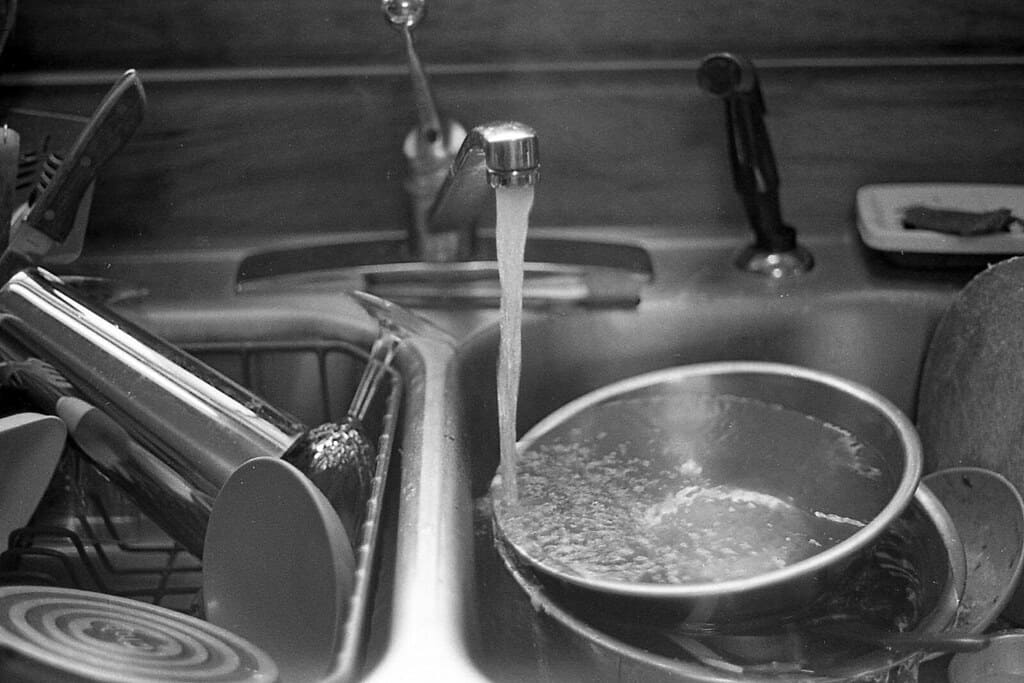
Declutter Workspace
Your workspace is the location where you wash the dishes should be devoid of any items that may obstruct your movement. This way, you should be able to work more efficiently without having to worry about breaking or causing a mess.
Step 2: Scrape Off Food Residues
Use a Scraper or Paper Towel
First things first, if there is any food debris on your dishes or cutlery, then it is no longer in your possession and must be disposed of. First, use a spatula to scoop out pieces that are larger than normal. This step is essential in order to wipe out dust particles from the sole of your foot, and it also makes for easier housework later on by reducing the amount of mopping that is required.
Step 3: Fill the Sink with Water
Use Hot Water
Once again, fill it up with hot water. It shouldn’t take you long to realize how crucial of a tip I am providing you with: hot water cuts through grease and makes cleaning up afterward a piece of cake. Pour a lot of the detergent and watch the foam concentrate into a bubble bath just the way kids do.
Control Water Flow and Avoid Water Sputtering
While doing any of the activities above, ensure a controlled flow of water. Don’t pull your tap to the maximum point. Instead, a gentle stream needs to be followed.
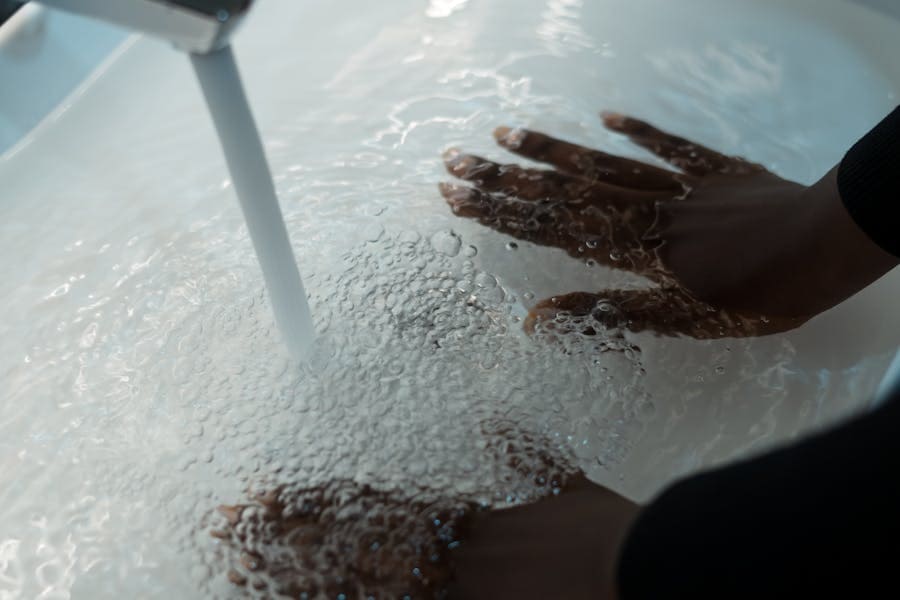
Step 4: Wash Dishes and Spoon in the Given Sequence
Begin with the Least Dirty Items
In this case, it would be more desirable to wash glass cups first. This is to avoid transferring grease onto already cleaner objects.
Restrict the Exposure of Dishes Outside Water (Keep Dishes Under Water)
When washing the dishes, it is preferable to keep the items being scrubbed under the water at all times. This technique also helps avoid unnecessary splashes since a considerable amount of water is already contained within the sink.
Optimize Your Movements (Avoid Unnecessary Hand movements) for washing spoon Without splashing
- Use Smooth Motions: Move your hands smoothly when washing dishes to avoid sudden splashes.
- Angle the Spoon Correctly: When washing spoons, angle them so that water runs off into the sink rather than outward.

Step 5: Rinse Thoroughly
Rinse with Clear Running Water
After washing, rinse with clean running water each item. In the case of double sinks, one might be utilized for washing while the other one for rinsing.
Minimize Splashing While Rinsing
- Set Your Faucet to Its Low Pressure Settings: Your faucet should be set to its lowest pressure settings possible when rinsing off.
- Rinse Items Close to the Sink: Avoid having the dishes thin when rinsing. This will help in avoiding water splatter from the sink.
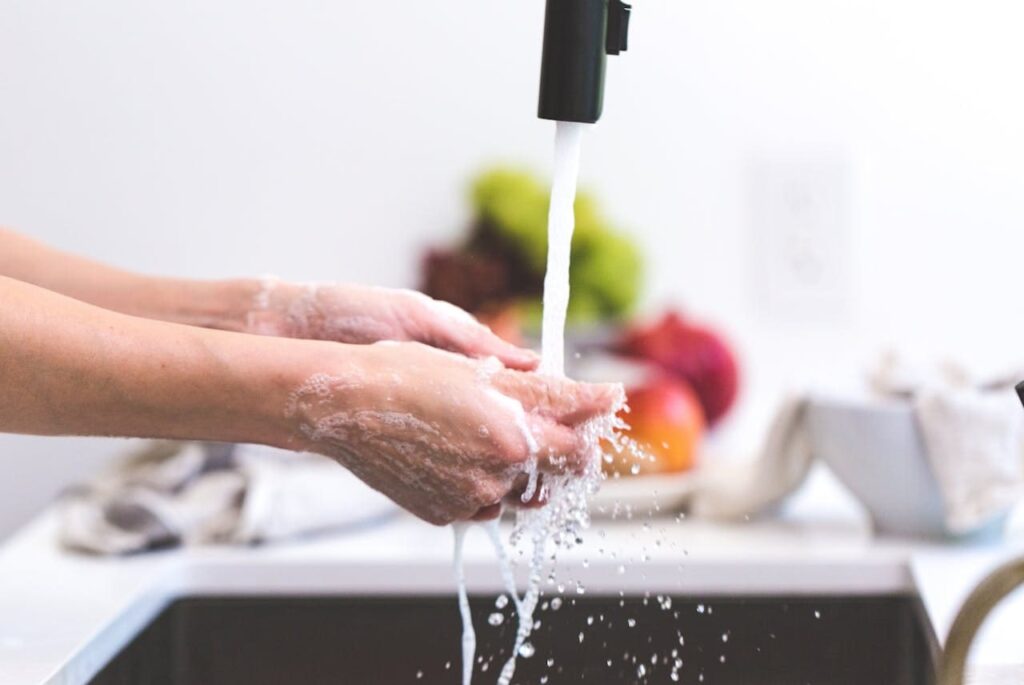
Step 6 Drying Methods
Air Dry or Towel Dry
There are two different methods that come to mind while washing the dishes: air drying them on a drying rack or towel drying them:
- Air Drying: With this method, washed dishes or other items are placed on a drying rack and left to hang until all excess water has dripped down on its own.
- Towel Drying: Alternatively, when a towel is the medium for drying the dishes, a clean towel can be used to dry each item closest to the skin and without turning each item inside out. Take care not to splash water droplets while drying the items.
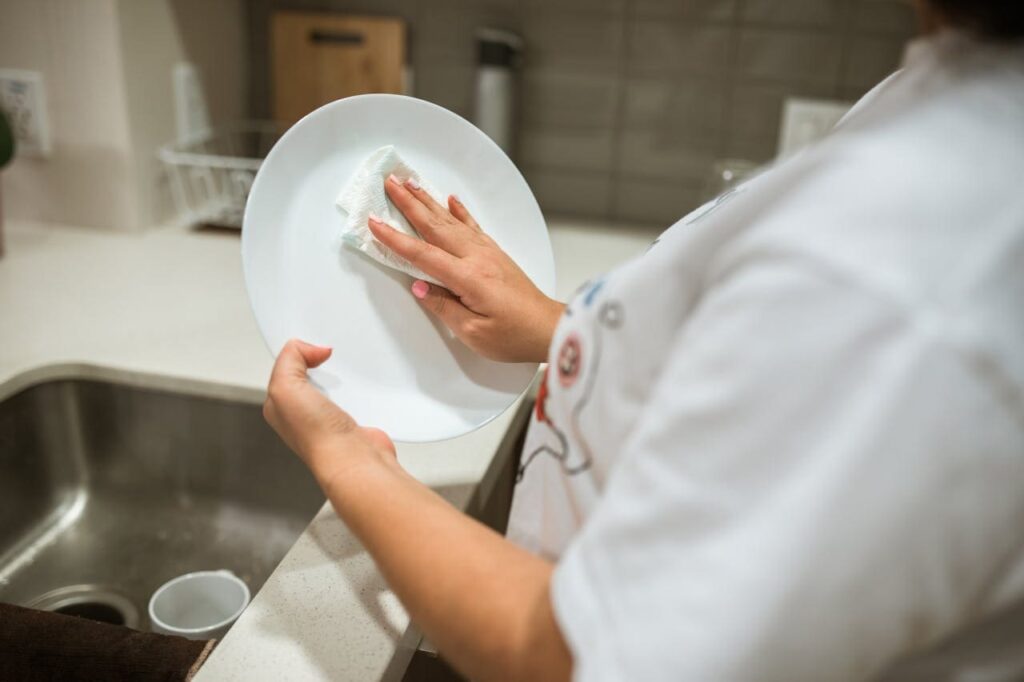
Additional Tips for Splash-Free Dishwashing
Use the Correct Equipment
- Sponge vs. Cloth: Use a sponge only for really major cleaning units because it can fulfill water, which will probably lead to spillage and many splashes during the washing process. It is better off using a dishcloth that does the washing better.
- Long-Handled Brushes: Ensure that when scrubbing pots and pans, long-handled brushes are used, which avoid the need for getting your hands really close to the rim of the sink.
Manage the Surrounding Space
- Wipe the External Surfaces: Clean sinks and surrounding kitchen countertops where around the sink should not be any object that may be wet or in contact with water.
- Use a Basin for Smaller Items: In cases where smaller utensils are being washed, such as spoons and forks, it is advisable to have a separate soaking basin filled with soapy water, which should be located somewhere near the sink.
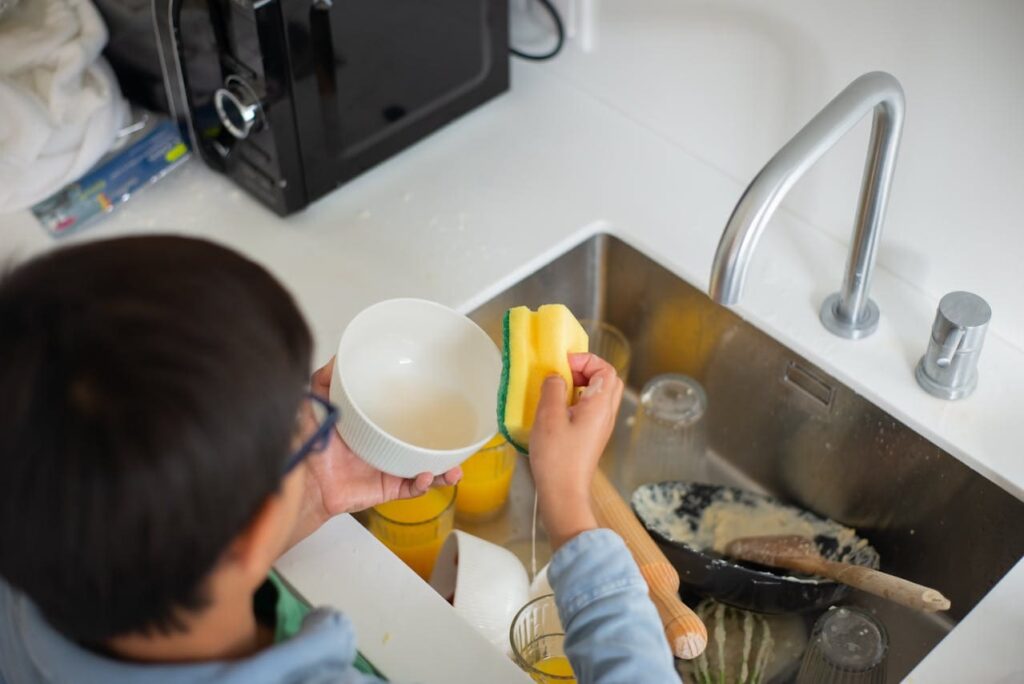
Practice Good Timing
- Wash the Dishes Right Away: It is wise to wash the dirty cups and plates right after use in order to avoid food scraps getting stuck on them unfavorably.
- Soak Stubborn Items for Some Time: You can use warm water and soap and let it soak for 15 to 30 minutes for very dirty and dried dishes before commencing to wash.
The Science Behind Splashing
Knowing the reasons of splashes may help you avoid some of them:
- Surface Tension: When a droplet strikes a surface at speed, water is propelled because of surface tension to the center.
- Impact Area: Spoon is another object with surface area, and when it strikes the water, the chances of splash increases even more.
Some of the impacts of this method may be reduced considerably through stronger cooking practices such as immersing dishes, rotating them, or using other advanced cooking methods.
How Spoon Shape Affects Water Splashing?
- Surface Area: Different shapes of a spoon also have different amounts of the surface of the spoon which can be submerged in the stream. Such that a spoon with a greater bowl will produce more splashes as it submerges more into water.
- Angle of Holding: With the bowl’s side downwards, the spoon, when held at an angle, reduces the area that is in contact with water, and thus less splashes are produced.
- Material and Design: It is expected that spoons made out of smooth material or rounded edges would have better water draining abilities than sharp edged and rough surfaced spoons because the later would have trapped water and consequently caused spillage.
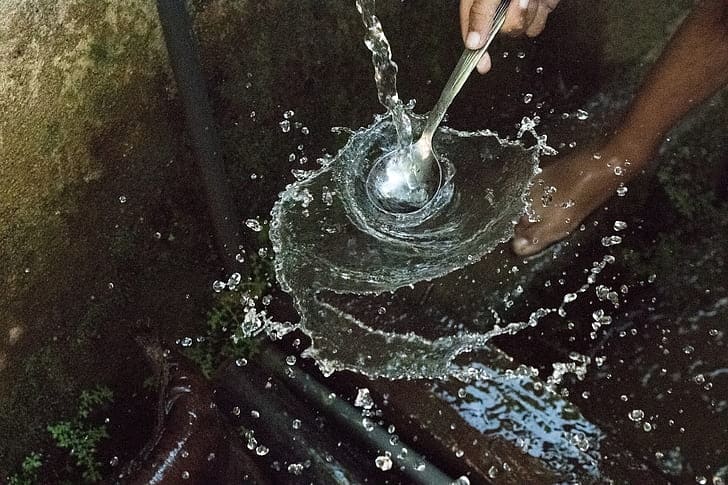
Best Techniques to Control Water Flow While Washing Dishes
- Adjust Faucet Pressure: While turning the faucet on, do it slowly to avoid spraying excessive water. By doing this, a gentle flow is created which produces less turbulence causing minimal splashes during washing.
- Install a Faucet Spray Shield: Many faucet-mounted sprayers come with spray shields which cut the water flow down to a smaller opening for when it is needed. This creates laminar flow when washing dishes which cuts bouncing and splash.
- Positioning: When washing, ensure that the dishes and the utensils are near the basin. This helps reduce the distance from which water can splash especially when washing under the tap.
- Wash in a Basin: Instead of having water streaming at all times, where water has to be wasted, start washing by filling a basin or container with soapy water. This not only saves water but also prevents splashes outside the basin.
Types of Dishwashing Detergents Best for Reducing Splashes
- Bio-surfactant Gel: The Giffy Lemon & Active Salt Dish Wash Gel cut through grease easily and thus do not allow for too much rinsing which usually causes a rounds a lot of splashes and waters mess.
- Low-Foam Detergents: Lower foam means reduced rinsing and this reduces the chance of splashing during the rinse phase as well. So, such types of products can be used for such a kind of process.
- Concentrated Formulas: These kinds of products cause less pollution as they require less washing. There is less water used and less rinsing which minimizes splashing during the application as well as rinsing.
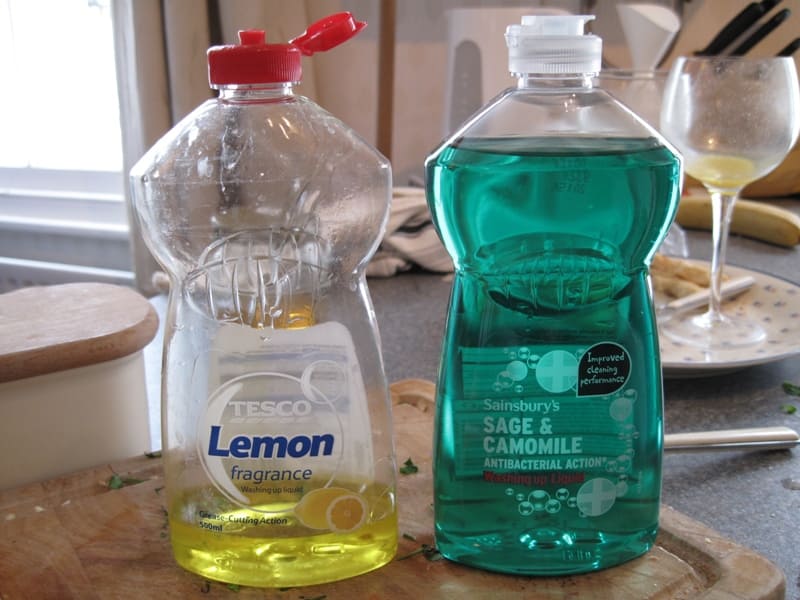
Specific Dishwashing Tools That Help Minimize Water Splashing
- Long-Handled Brushes: By using these, one can scrub pots and pans from a distance, reducing the chance of back splatter to the user or nearby surfaces.
- Spray Bottles: Running a tap at all times is quite useless, and so to avoid splashes, spray bottles with diluted soap solutions are helpful.
- Anti-Splash Guards: Splash shields insert into the sink and this absorbs the impacts of the splashes that may happen in the kitchen.
- Basin or Sink Inserts: A wide sink with a shallow insert or basin can help hold water in its place without overflowing.
With these methods in mind and after learning how different tools and materials affect the process of dishwashing, you are able to greatly reduce the extent of the splashing while still keeping your kitchen area clean.
Must Read,
✔️ Farewell Look: Which Colour Saree is Best for a Farewell Party?
✔️ White Ants: How to get rid of white Ants in the house?
Conclusion
Greatly, most of dish splashing can be avoided using some techniques and through practice. With the proper amount of preparation, restriction of body motion as well as correct tools, and proper know-how on splashing, dishwashing can be done easily and in a short time.
With time you will get used to washing plates in such a way that no spills will occur, and thus make your cooking more pleasurable and not a worry.


